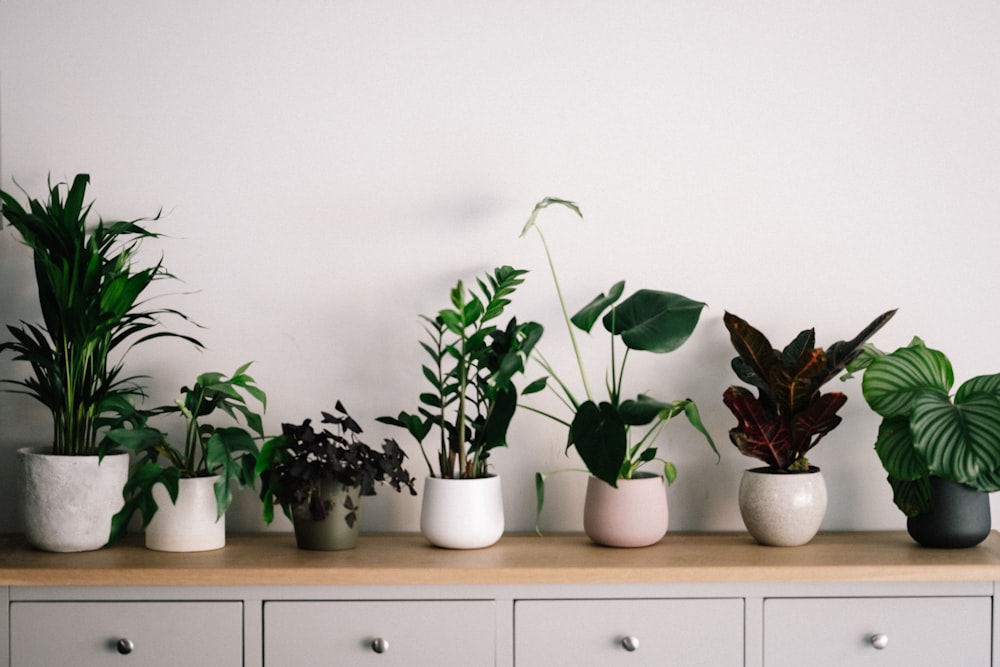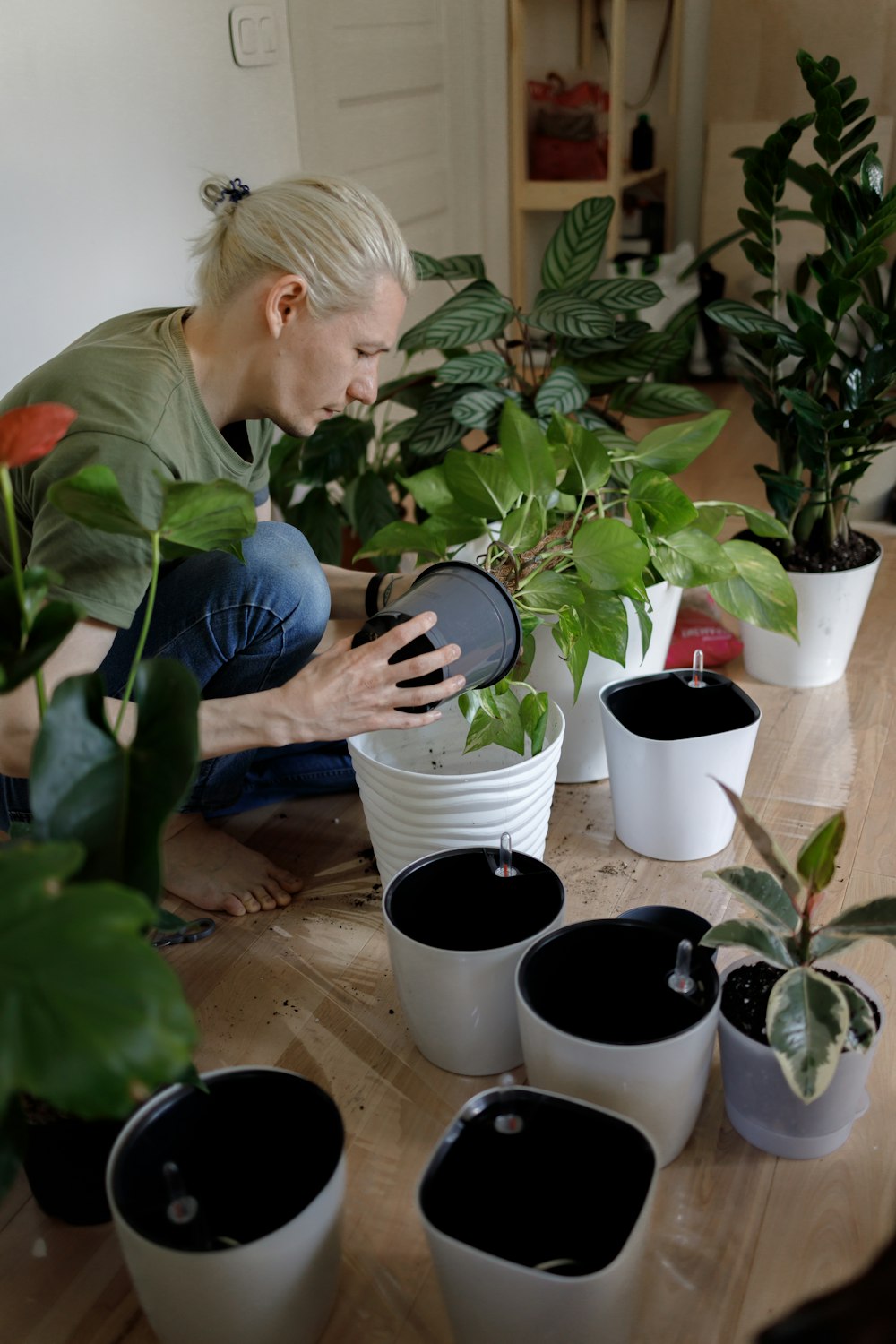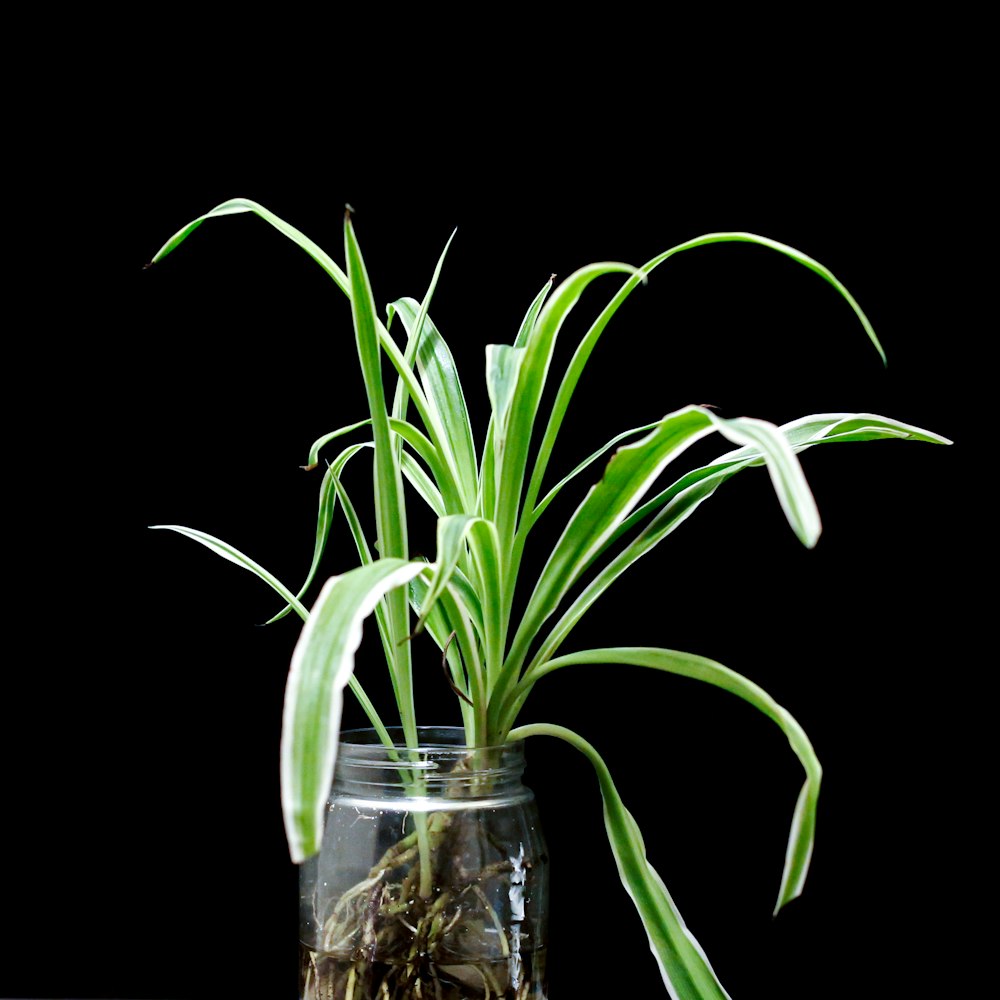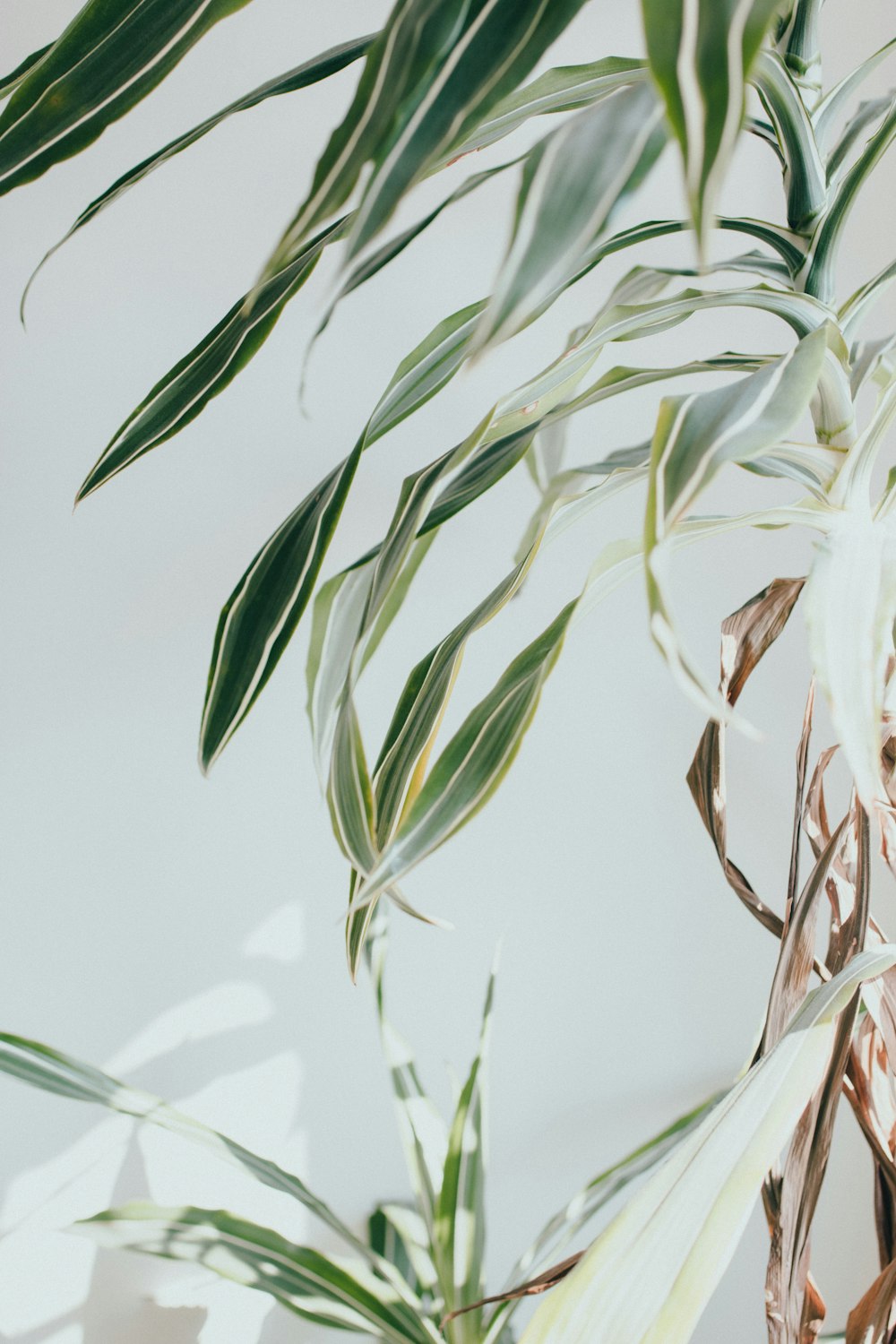Indoor Gardening and the Benefits of Having Plants in your Home

Have you ever wondered about using houseplants to improve the quality of the air you breathe? If you love adorning your home with green, leafy companions — or are thinking of doing it — you'd be happy to know that this practice has some health benefits too. Along with making your living room look cozy and pretty, plants can also generate a cleaner indoor environment by acting as air-purifiers.
Why is it essential to have fresh and clean indoor air?
According to surveys, we spend most of our time indoors. While we usually worry about external air contamination, we're unaware of being exposed to harmful chemicals at home (or at work). But living in modern, highly isolated buildings has some flip sides. Very often, pollutants' concentration is higher indoors than outdoors, with severe consequences on our health.
Air pollutants can be virtually everywhere: the primary sources of contaminants in our houses include furniture, building materials, cleaning products, adhesives and glues, and even carpets. They all release chemical substances — the so-called VOC (volatile organic compounds) — that can cause adverse effects on our health if inhaled. The most common VOCs you can find indoors are benzene, formaldehyde, toluene, and ammonia. Biological contaminants, like mold and bacteria, and combustion products from tobacco smoke can add up and generate a dangerous, toxic mix.
Lack of airflow and VOCs' inhalation can carry unpleasant consequences. One is the "sick building syndrome:" this condition, which arises when exposed to low-quality indoor air, provokes fatigue, headaches, nausea, and allergic reactions. While frequent ventilation is essential to freshen up your space, you also need to eliminate all the possible contamination sources. Getting rid of contaminants can imply using more ecological cleaning products or removing VOCs from furnishings before installing them.
Our well-being depends on a delicate balance among different parts. When we live in highly isolated buildings, away from the natural ecosystem, we can alter this equilibrium. That's why, together with using filters and exposing your house to constant ventilation, you should consider bringing indoor plants into your living space.
Health benefits of indoor plants
Plants are indispensable to the ecosystem as, through photosynthesis, they take the carbon dioxide we exhale and provide oxygen in return. Their action is vital to remove toxins from the air we breathe. Plants can metabolize harmful chemicals, release innocuous derivatives, and incorporate toxic substances (such as heavy metals) into their tissues.
A famous study from NASA investigated the effects of some houseplants on reducing indoor air pollutants. The research demonstrated that plants could purify the indoor air because they act as a filter to remove VOCs and viruses and bacteria present in the air. Later research has found that also soil microorganisms in potted plants can contribute to clean indoor air.
While their filtering action is maximum in ideal environments (that means, in laboratory conditions), plants' efficiency in removing toxic substances in our houses is relatively low. The space in which we live and work isn't comparable to the chambers used in experiments. You would require around ten plants per square foot to effectively reduce all VOCs, which means turning your house into a little forest.
Said so, bringing in a few houseplants can help you enjoy cleaner and healthier air if you combine it with careful behaviour. Expose your house to frequent airflow and adopt some prevention strategies — like regularly changing air filters and storing hazardous products in a safe place. You'll freshen up your space, breathe cleaner air, and enjoy additional benefits. Indeed, bringing plants into your living space is worthy for several reasons:
Having plants indoors can lower your stress levels.
A study showed that interaction with plants could decrease stress more than mental work does. In the study, a group of volunteers performed two different tasks: transplanting indoor plants and working on a computer task. Researchers measured physiological parameters such as blood pressure and pulse rate and found out the subjects felt more soothed after the transplanting job, while the computer activity increased their blood pressure;
Seeing plants can bring happiness and serenity.
Taking care of a plant, or just viewing it, produces some positive feelings in our bodies that can help us feel better. People assert they experience positive emotions and feel more relaxed in a greener environment;
It can boost productivity.
Putting a couple of plants in your room helps you to be more productive than other productivity-boosting techniques may do. A study found out that, in the presence of plants, volunteers completed a timed computer task faster than when they were in a room without plants;
Having indoor plants can help reduce allergic symptoms and irritation.
By acting as air filters, indoor plants can purify the air you breathe and reduce the allergic reactions associated with low-quality air;
Plants can lower humidity of the room.
If it is too humid inside your home and you want a natural way to solve it, try indoor gardening. Besides indoor aesthetic effects, some houseplants can help decrease indoor humidity as they absorb moisture from the air.
Top 10 air-purifying plants for your home
If you aren't a plant lover, you might find the idea of making your house look greener a bit discouraging. Perhaps you're worried you could forget to water your plants, or you don't know how to take care of them if you stay away for long periods. You don't need to have a green thumb to enjoy plants' benefits: there are plenty of houseplants that grow leafy and flourishing even without your constant attention.
When looking for seedlings, you may choose those that combine their air-purifying properties with other features, like a sweet scent of graceful flowers. Be aware that some indoor plants can be toxic for children and animals: before buying them, make sure they aren't dangerous if your kids or pets touch or ingest them. You may prevent accidental exposure to toxic plants by placing them out of your children's (or pets') reach.
What are the best air-cleaning plants for your home? Here's a list of some of the most efficient (and easiest to grow) houseplants.
Spider plant
Spider plant, also known as st. Bernard's lily or ribbon plant is among the most adaptable plants you can find. It is ideal for inexperienced gardeners, as it's very easy to grow and can live in a wide range of conditions.
To take care of your spider plant, expose it to bright, indirect light and a temperature around 55–65 °F. Water your spider plant only when the soil is dry: too much water can kill your plant, as it could become too soggy, and its roots can rot.
Spider plants are efficient in removing formaldehyde, xylene, and toluene and aren't toxic for your pets, so they're among the best choices to have cleaner indoor air.
Golden photos (devil's ivy)
This gorgeous plant with heart-shaped leaves is also known as devil's ivy because it's almost impossible to kill, and it grows even when kept in the dark.
Devil's ivy is exceptionally tolerant to a wide range of lighting conditions. It can prosper in bright sunlight or dim lighting; only direct sun and complete darkness can harm it. The ideal temperature range for a devil's ivy is 60–80 °F. It doesn't need too much water, and no damage occurs if you under-water it. Unlike other houseplants, it does well even with tap water.
Devil's ivy removes benzene, toluene, xylene, formaldehyde, but it's toxic for both humans and pets. It can irritate the skin if touched, and its ingestion can provoke vomiting and swelling. If you want to have it in your house, make sure to keep it away from pets and children.
Dragon tree
Dracaena marginata, also known as dragon tree, is an attractive plant with green sword-shaped leaves. Thanks to its tolerance to a wide range of temperatures (61–75 °F), it's easy to take care of it. To help it grow better, expose your dragon tree to an area with bright, indirect sunlight, and water it regularly. Don't let it take direct sunlight, which may burn its foliage. If the leaves get too dry or sapless, maybe the environment is too cold, or there isn't enough humidity.
The dragon tree is among the most efficient air-purifying plants, as it removes formaldehyde, benzene, trichloroethylene, xylene, and toluene. Be careful because it's toxic for your pets: if they chew its leaves, they can experience vomiting, swelling, lethargy, and other unpleasant symptoms.
Janet Craig
Dracaena Janet Craig is one of the most popular indoor plants used in homes and offices. This plant has dark green, sword-like leaves and can grow high (up to 12-15 feet in its homeland Africa).
Janet Craig likes medium lighting conditions, while it doesn't stand direct sun: placing it on your balcony or exposing it to sunlight can burn its leaves. This dracaena doesn't like extreme temperatures: don't leave it in too hot or cold weather. Keep it above 55 °F and under 90 °F.
This plant can remove benzene, toluene, xylene, formaldehyde, and trichloroethylene. It contains saponins, which can be toxic for your pets and may cause vomiting, weakness, and incoordination when ingested.
Chrysanthemums
Chrysanthemums, or mums, are gorgeous and colourful plants that make autumn gardens look stunning. Their colour can vary across different shades of white, yellow, lavender, purple, or red. That's one of the most picturesque plants you may wish to have in your house.
Mums are sun-loving plants. The more light they receive, the more prosperous they grow. Water them frequently, but only when the soil is dry. To increase the production of new and colourful flowers, remove wilted flowers.
Mums are efficient air-purifying systems as they remove formaldehyde, benzene, xylene, toluene, and trichloroethylene. Although their familiar name and beautiful appearance, they're toxic. They contain a natural insecticide, called pyrethrin, which can be poisonous to dogs, cats, horses, and even children. Symptoms of poisoning may vary according to the type of plant but generally include nausea, vomiting, and rashes.
Bamboo palm
Bamboo palm is an elegant and good-looking plant, perfect for house decoration.
It prefers low sunlight and grows better when exposed to indirect, filtered light. Be careful as a sudden change in lighting conditions can shock the plant. Bamboo palm likes moist conditions. Keep it in a place with temperatures between 65 and 80 °F, and water it only when the soil looks dry (rather than watering it every day). Once your bamboo palm becomes too large for its present container, you should repot it.
Bamboo palm is an efficient filtering system: it removes formaldehyde, trichloroethylene, toluene, and xylene. It isn't toxic, but its berries can be poisonous.
English ivy (hedera helix)
English ivy is a perennial, evergreen climbing vine that you can use to adorn your windowsill or place in a hanging basket.
It grows best if exposed to indirect light in summer, while cold winter wind and hot weather can damage it. It stands a wide range of temperatures (between 45 and 80 °F).
English ivy can remove benzene, formaldehyde, trichloroethylene, toluene, and xylene. All parts of the plant are toxic if ingested by humans and pets and can cause severe skin irritation and vomiting, as well as delirium, hallucinations, and fever.
Rubber plant (ficus aelastica)
The rubber plant is a tree-like plant with beautiful leaves of different colours. Its appearance makes it perfect for home decor.
Rubber plant prefers bright, indirect light and temperatures between 60°F to 75°F. In winter, it can stand temperatures as low as 50°F. You need to water it frequently during their growing season in summer. Taking care of your rubber plant requires more attention than other houseplants, as you need to mist it often and repot it if it starts to grow too much.
Rubber plants can remove formaldehyde but can be toxic for both humans and pets. Its sap is irritating and may provoke skin rashes, while ingestion of its leaves can cause mild stomach ache or symptoms such as nausea, diarrhea, or vomiting.
Peace lilies
Peace lilies are among the most popular plants for home and office decoration. They're easy to grow and have a beautiful aspect — dark green, lance-shaped leaves, and white flowers.
Peace lilies enjoy high humidity and high temperatures: they grow best in climates above 70°F. You can keep them in a bright, well-lit area but don't expose them to direct sunlight (especially in the hottest hours of the day). Avoid too much water; instead, keep the soil moist. In case you miss watering your peace lily, do not worry because it can tolerate short periods of dry soil. However, if neglected for too long, their leaves will start to fade and turn brown
Peace lilies are some of the most effective air-purifying plants, as they remove almost all the VOC you can find in your house: benzene, formaldehyde, trichloroethylene, toluene, xylene, and ammonia. Before covering your walls with peace lilies, consider that they can be toxic for both kids and pets if ingested.
Aloe vera
Aloe vera is a popular and attractive plant with diverse medicinal uses. The ease of growing and its health benefits made it a widespread indoor plant.
Taking care of aloe vera is simple. Expose it to bright, indirect sunlight or artificial sunlight and don't water it too often: allow the soil to completely dry. Aloe vera stands average home temperatures and does well in dry air in our homes.
This plant combines its air-filtering properties (it removes formaldehyde) with beneficial and soothing characteristics. You can use aloe vera juice to relieve pain from rashes and minor burns (if applied topically). Ingesting the sap can cause nausea and may be toxic in larger quantities, so be careful and keep it away from pets or children.
Houseplants for a happier and healthier environment
While covering your walls with plants alone won't remove all the air pollutants, bringing some plants in your house or workplace can help you freshen up the air you breathe and has lots of several benefits.
Before choosing what plants to buy, you should consider whether they need extra attention like pruning, fertilizing, or repotting. Be careful to check for their toxicity; you don't want to expose yourself or your pets to allergic reactions or other health problems.
If you surround yourself with plants, your mood can improve and your productivity boost. Sharing your space with these green companions is an excellent way to create a cozy, calming, and good-looking environment, as well as a happier and healthier space.










